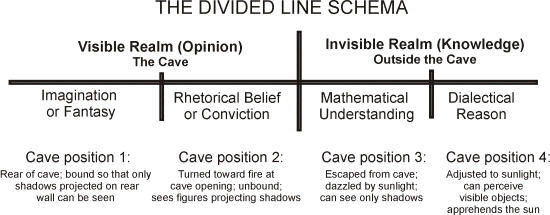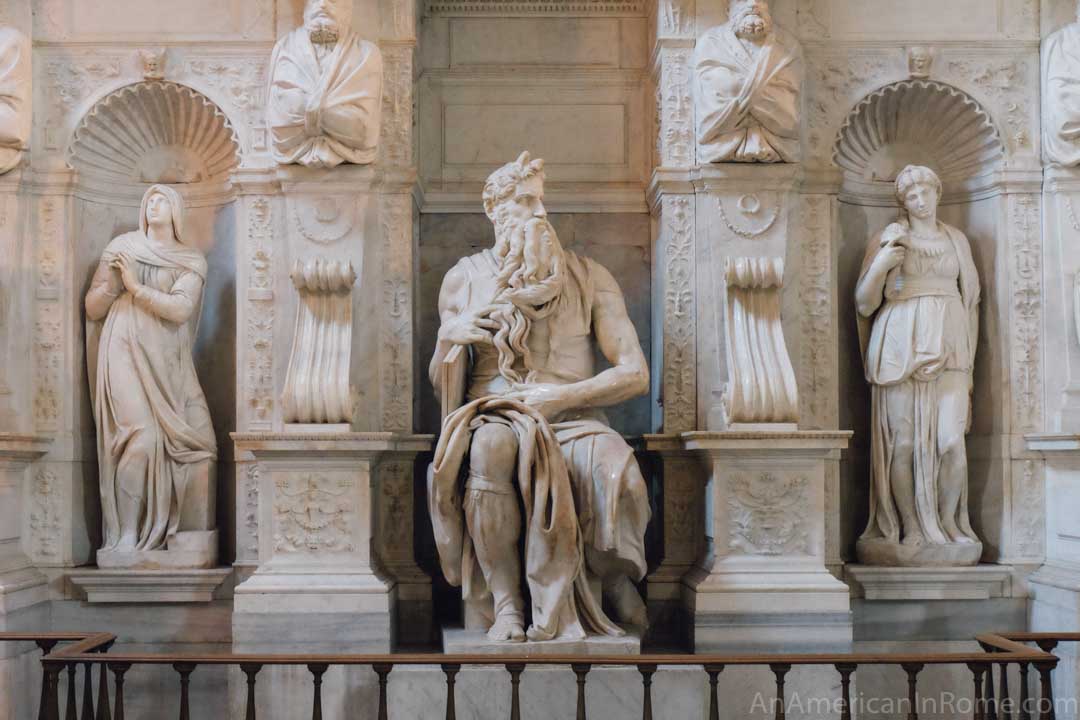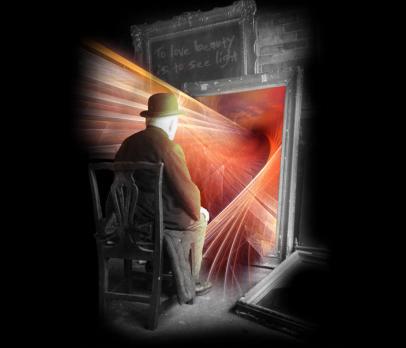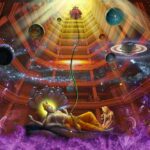Plato’s Metaphysics: Being and Becoming
Perhaps Plato’s greatest contribution to Western philosophy is the idealism embedded in his Theory of Forms, which in essence breaks down existence itself as not only a physical world of inanimate and animate objects, but a theory of knowledge and understanding which is based upon the notion that a) the understanding of a thing is predicated upon the existence of a true Form, or Idea of a thing without which the understanding, or even the thing itself, could not truly “exist:, and b) that such Forms or Ideas existed eternally as intellectual constructs upon which our understanding of the world around us was based. It is from this premise and starting point that we must begin to try and grasp Plato’s perspective on not just reality and knowledge, but also ultimately his views on universal creation as well as his conception of the human Soul, all of which underpin not just his ethical philosophy but also his socio-political philosophy as reflected in the Republic and Laws most notably.
One of the primary themes that underlies all of Plato’s works, and can be especially seen in the Timaeus and Phaedo among other of his prominent works, is that the principles of reality or the known universe, and the very meaning of life and the pursuit of wisdom and understanding are not just worth exploring, but represent the very highest goal of life – the end of the philosopher. His means of exploration, and perhaps the most defining characteristic of the Hellenic philosophical tradition which he so greatly influenced, is the role of reason and argument in the form of dialogue, logos and dialectic respectively, in ascertaining these universal truths, even if absolute truth or certainty is not completely possible given the limits of human understanding. Whether or not he believed that absolute knowledge (sophia, phronēsis) was altogether possible or not is debatable and this is perhaps one of the great mysteries of Platonic philosophy as we try to understand it through the metaphors, analogies and arguments he presents and explores throughout his dialogues, the method and means of communication of these ideas and principles in fact lending itself to skepticism which was a hallmark of many of the philosophers which succeeded him at the Academy.
With respect to the nature of what can truly be known, from which any definition of reality can be drawn, Plato’s teachings as we understand them through his dialogues establish the first and foremost tradition of skepticism in Western – Indo-European really – thought. This tradition, which starts with Socrates and clearly influenced Plato significantly, establishes the grounds of epistemology – the study of knowledge (epistêmê)– which is reflected in the philosophical tradition which Plato leaves behind at the Academy which he founded in Athens circa 387 BCE. This tradition of skepticism” represented the core intellectual stream of thought emanating from the Academy subsequent to Plato which provided the basis for other currents of more materialistic and empiricist philosophical schools such as Stoicism and Epicureanism which has a much more broad definition of knowledge, each playing a strong role in the development of Hellenic philosophy in the classical Greco-Roman period.
Plato’s teachings were founded upon the principle, again believed to have been a legacy of Socrates himself, that there were significant intellectual limits upon that which could be truly known given that knowledge itself was predicated on the a priori existence of Forms or Ideas without which any understanding or comprehension of the physical world of matter comprehended by the senses is possible. For Plato considered knowledge itself to be a type of “recollection”, which was part of his argument for the immortality of the Soul, which was the “form” of the body, one of the primary themes of the Phaedo, a dialogue which circulated in antiquity under the title of On the Soul.
Probably the most comprehensive literary expression of Plato’s notion of knowledge, the distinction he draws between the intelligible world (higher form of knowledge) and the visible world (lower form) comes from the Republic, expressed in what has come to be known as the analogy of the divided line.
“Conceive then,” said I, “as we were saying, that there are these two entities, and that one of them is sovereign over the intelligible order and region and the other over the world of the eye-ball, not to say the sky-ball, but let that pass. You surely apprehend the two types, the visible and the intelligible.” “I do.”
“Represent them then, as it were, by a line divided into two unequal sections and cut each section again in the same ratio (the section, that is, of the visible and that of the intelligible order), and then as an expression of the ratio of their comparative clearness and obscurity you will have, as one of the sections of the visible world, images. By images I mean, first, shadows, and then reflections in water and on surfaces of dense, smooth and bright texture, and everything of that kind, if you apprehend.” “I do.” “As the second section assume that of which this is a likeness or an image, that is, the animals about us and all plants and the whole class of objects made by man.” “I so assume it,” he said. “Would you be willing to say,” said I, “that the division in respect of reality and truth or the opposite is expressed by the proportion: as is the opiniable to the knowable so is the likeness to that of which it is a likeness?” “I certainly would.”
“Consider then again the way in which we are to make the division of the intelligible section.” “In what way?” “By the distinction that there is one section of it which the soul is compelled to investigate by treating as images the things imitated in the former division, and by means of assumptions from which it proceeds not up to a first principle but down to a conclusion, while there is another section in which it advances from its assumption to a beginning or principle that transcends assumption, and in which it makes no use of the images employed by the other section, relying on ideas only and progressing systematically through ideas.” [1]
Here we have Plato’s fundamental distinction drawn, in the analogy of a “divided line”, the world of the visible, that which can be perceived by the senses, and the world of intelligibles, i.e. thoughts and ideas divided into two unequal portions of a line, the intelligible portion being given greater emphasis and therefore greater (relative) size than its counterpart that represents the visible world. Then each of these sections is divided again into two unequal portions of the same ration relative to each other, with the larger proportion of each subsection is sized based upon its relative clarity from an intellectual standpoint.
The smaller of the two segments of the visible portion of the line, i.e. the visible world, is made up of first images – shadows, reflections and the like – which are less “real”, more “obscure”, than the “things” which they represent in and of themselves, i.e. that which makes up the larger portion of the visible world part of the line because the “things” themselves are have more intellectual clarity or definition that the “images” or “shadows” of things.
Likewise, and analogously, the intelligible world is also divided into two unequal sections – of the same proportion. The first of which, the smaller subsection, consists of the treatment of the images of things, and via various assumptions and conclusions various ideas or “theories”, abstract conclusions are drawn, i.e. “bottom up” or “deductive” reasoning of sorts. The second section, the larger subsection of the intelligible world does not deal with things themselves, or even their images or representations but only deals with ideas in and of themselves and based upon pure intellectual reasoning – dialectic or logos – progresses from various assumptions or theses up to an ontological first principle or set of principles, i.e. bottom up logic or “inductive reasoning” of sorts.
Plato’s Epistemological worldview, i.e. the Analogy Divided Line[2]
Plato then goes on to use this analogy of the divided line as a representation, and relative worth or value, of four different types of knowledge, essentially using the divided line to describe his epistemological worldview. Each section he describes as “affections of the Soul”, our perhaps better put, “capabilities” or “faculties” of the human mind. The largest section of the line represents the clearest, the least obscure, and the closest depiction of Truth or Reality and is representative of conclusions drawn by use of pure Reason (logos), the faculty of the mind which deals only with ideas in and of themselves and reaches conclusions from principles up to the greatest and highest principle, i.e. the Good (segment DE).
This type of knowledge is followed then by lesser knowledge which is arrived at by the faculty of understanding, which draws various conclusions based upon “thinking” about not just abstract ideas in and of themselves but also about things and images as well (segment CD). So although this type of thinking, like geometry for example, still deals with the intelligible world and therefore is of higher value than the “visible” realm of perception, is nonetheless of lesser value than conclusions drawn via pure reason and using pure ideas because this type of knowledge does deal with objects, even if they are simply images or representations of physical objects or things.
These two types of thinking that are categorized in the world of intelligibles are then followed by lower forms of knowledge which deal directly with objects of the visible world, the higher of which Plato refers to as “belief”, or “opinion” which deals with objects of the senses that exist within the world of visible world itself, what one might call the material world or the domain of physics (segment BC), and then the lowest form of knowledge which he describes as “conjecture” or “imagination” (segment AB) which deals with not things in and of themselves but their shapes or images and deals with the likeness of visible things.[3]
In this section of the Republic, which precedes his more graphic metaphor of his Theory of Forms as told in his Allegory of the Cave, albeit wrapped up in the middle of a socio-political work, does represent from a Western standpoint the one of the first prolific and well-articulated forays into the world of metaphysics, i.e. the exploration of the true nature of reality that underlies the world of the senses, and attempts to explain our place in this world and the illusory and shadowy nature of the objects of our perception independent of any religious or theological dogma. It also illustrates the prevalence of geometry and mathematics as a one of the primary means to which this reality can be understood, a marked characteristic of not just the Platonic philosophical tradition, but the Western intellectual tradition as a whole.[4]
It is in the Timaeus however, one of the later and more mature works of Plato where he expounds upon his view on the nature of the divine, the source of the known universe (cosmological view), as well as the role of the Soul in nature. And although Plato, and Socrates as represented by Plato’s earlier works, rejected the mythological and anthropomorphic theology that was prevalent in Ancient Greece, Plato does not completely depart from the concept of a theological and divine or supra-natural creator of the known universe, at least as reflected in the words of Timaeus in the dialogue that bears his name.
In the Timaeus, Plato describes a “likely story” as to how the world was created, leveraging again reason (logos) and dialectic, and heavy use of analogy and metaphor, to describe the creation of the universe as a product of the intelligent design of a creator, his Demiurge.[5] In many respects, the ideas and postulates of the Timaeus represent an expansion on Plato’s Theory of Forms which he introduces in Phaedo and the Republic but follows its intellectual development into the idea of the Good, and its role in the creation of the cosmos (kosmos), the material universe within which we live.
He starts again by drawing the distinction between the intelligible and sensible worlds, that which he calls Being and Becoming, two terms that have come to define Plato’s epistemological and cosmological worldview.
Now first of all we must, in my judgement, make the following distinction. What is that which is Existent always [28a] and has no Becoming? And what is that which is Becoming always and never is Existent? Now the one of these is apprehensible by thought with the aid of reasoning, since it is ever uniformly existent; whereas the other is an object of opinion with the aid of unreasoning sensation, since it becomes and perishes and is never really existent.[6]
Here again Plato makes a distinction between the physical, or visible, world which is subject to change, and the eternal and changeless world of intelligibles, the Intellect (Nous) which can only be apprehended by use of the mind and reason, i.e. is not perceivable by the senses directly and can be discerned in the realm of the mind or thought. He draws the basic distinction between that which is subject to change, the “visible” or “material” world (Becoming), and that which is eternal and changeless (Being). Knowledge of the former, which falls under the category of the natural sciences which is the main thrust and emphasis of Aristotle’s reality, or sphere of knowledge, is not rejected outright by Plato but is held subservient – due to its constant fluctuating and changing state – to the world of ideas and thought which is apprehended by intelligence (Nous) and reason (Logos) and which is changeless and eternal.
The realm of Becoming is always subjected to perishing at some level and therefore never truly “is”, or can be said to “exist” within the context of Plato’s epistemological and ontological framework. It is conceived of by what he deems “opinion”, alluding to the fact that perception is subjective in nature and what one perceives or experiences is not necessarily the same experience or perception of someone else, or some other being for that matter. It is perceived via the senses, i.e. not by reason. Whereas the latter realm always “is”, Being, is changeless and eternal, and is conceived of, apprehended as it were, by reason, mind and intelligence alone. It is not subject to change and therefore according to Plato it truly can said to “be”, or can be said to “exist” within Plato’s epistemological framework, hence the term Being that he allots to it.
It is within this context of Plato’s distinction between the world of Being and Becoming, as he describes it in the Timaeus here, that the connection between Plato and Parmenides is drawn. In many ancient philosophical circles, Heraclitus is said to be the mother of Plato’s teachings where Parmenides is said to be his father and it is his later works, and again specifically in the Timaeus, that we see this distinction along the lines of Being and Becoming clearly drawn, representing the most mature form of Plato’s’ intellectual conception of knowledge, i.e. what can be known, what philosophers call epistemology.
Parmenides (late 6th early 5th century BCE) is known for his one work, known by the title On Nature, written in hexameter verse which although does not survive in full, is believed to survive mostly intact through quotations and excerpts of later philosophers and commentators, reflecting its significant influence on early Hellenic philosophical development. Most certainly Parmenides is one of the most influential of the “Pre-Socratics”, and it is through the interpretation of his philosophy through Plato really, that this determination is made. He is believed to have been born in Elea in Southern Italy and therefore is historically categorized as part of the “Italian” branch of early Hellenic philosophy – as per Diogenes Laertius, the same branch as Pythagoras who represents the first and earliest of this tradition and as distinguished from the Ionian branch within which Socrates, Plato and Aristotle, as well as the Cynics and Stoics, belong to.
In Parmenides’s poem, he describes a pseudo allegorical journey up into the gates of Heaven driven by a golden chariot where he is initiated into eternal wisdom, i.e. the mysteries as it were, by the goddess of wisdom herself represented by the goddess Night, the very same goddess who plays a critical role in the unfolding of the universe in the in the Orphic mythological tradition. [In later classical Greek mythology, she is personified as Athena, the goddess of wisdom and the daughter of Zeus, and it is no doubt she who most represents the notion of wisdom (i.e. sophia) as Plato perceives and describes it, in particular its illuminary nature from an intellectual perspective.]
In the excerpts that are extant from his poem On Nature, Parmenides distinguishes in very esoteric and almost mystical – and certainly cryptic – language that which is said to “be” or exist (to eon), or “true reality” (alêtheia), which he associates with thought and language and is wholly distinguishable from that which cannot in fact be said to exist in the same way, i.e. that which is not “real” and is wholly distinct from true reality (again alêtheia), due to its fluctuating and ever changing nature.
The thing that can be thought and that for the sake of which the thought exists is the same; for you cannot find thought without something that is, as to which it is uttered. And there is not, and never shall be, anything besides what is, since fate has chained it so as to be whole and immovable. Wherefore all these things are but names which mortals have given, believing them to be true—coming into being and passing away, being and not being, change of place and alteration of bright color. [R. P. 119].[7]
In Parmenides, as we know him again through the quotations and comments of philosophers from the classical Hellenic period and later, we find what is believed to be the source of Plato’s epistemology where, in Vedic terms, the world of “name and form” which is in a constant state of change and flux, which falls in the domain of what Plato terms “opinion”, is held to be an inferior form of knowledge than the realm of the changeless and eternally existent world of ideas thought, as discerned by pure reason (logos), i.e. “true reality” which Parmenides calls alêtheia and which Plato refers to as Being, again distinguished from that which is Becoming. This bifurcation and sublimation of the material world for the ethereal or rational world ultimately provides the basis for Plato’s Theory of Forms and is the basis upon which he builds not only his theory of knowledge but also his cosmology as outlined in the Timaeus.
Furthermore, while Parmenides writes in hexameter verse, there is clearly a logical cohesion to his work, an argument or a case he is trying to make, to establish the grounds of being, in a classical philosophical sense, where he is attempting to justify and rationalize, and in turn provide the logical foundation for, his position of establishing that which “is” (to eon), or can be said to exist due to its eternal and unchanging nature which in turn again is distinguished from, and held to be of higher intellectual and philosophical value than, that which is subject to change and ultimate dissolution, i.e. the objective and material world.[8]
In this sense Parmenides work and philosophy that is represented therein is not only the forefather of Plato’s Being and Becoming as laid out in the Timaeus, but also the forefather of the means by which this distinction is established, i.e. by reason and argument which Plato presents in dialogue form using logic, or dialectic, which can be viewed as a more mature and evolved form of (written) communication of ideas and metaphysics than that which is used by Parmenides who follows in the footsteps of the earlier mythic poets Homer and Hesiod.
Transitioning back to Plato’s cosmology and its relationship to the worlds of Being and Becoming respectively in the Timaeus, we find a description which is markedly anthropomorphic in conception and yet at the same time rests upon his basic metaphysical delineation of reality between Being and Becoming – i.e. that which is permanent, eternal and unchanging and comprehended by reason (logos) and thought or ideas (eidôs), versus the sensible realm which is subject to change and “opinion” and therefore is characterized by an implicit creative and destructive process.
Again, everything which becomes must of necessity become owing to some Cause; for without a cause it is impossible for anything to attain becoming. But when the artificer of any object, in forming its shape and quality, keeps his gaze fixed on that which is uniform, using a model of this kind, that object, executed in this way, must of necessity [28b] be beautiful; but whenever he gazes at that which has come into existence and uses a created model, the object thus executed is not beautiful.
Now the whole Heaven, or Cosmos, or if there is any other name which it specially prefers, by that let us call it, —so, be its name what it may, we must first investigate concerning it that primary question which has to be investigated at the outset in every case, —namely, whether it has existed always, having no beginning of generation, or whether it has come into existence, having begun from some beginning. It has come into existence; for it is visible and tangible and possessed of a body; and all such things are sensible, [28c] and things sensible, being apprehensible by opinion with the aid of sensation, come into existence, as we saw, and are generated.
And that which has come into existence must necessarily, as we say, have come into existence by reason of some Cause. Now to discover the Maker and Father of this Universe were a task indeed; and having discovered Him, to declare Him unto all men were a thing impossible. However, let us return and inquire further concerning the Cosmos, —after which of the Models did its Architect construct it?[9]
Here we see not only the implicit anthropomorphic, or perhaps better put anthrocentric, view of universal creation, but also the fundamental assumption of causality which rests at the heart of what is perhaps best terms his “theological” cosmological conception. In other words, implicit in the existence of the universe as we know and perceive it, in fact implicit in the existence in anything, is some element of causality even if in this context he intends to mean “purpose” or “reason”, rather than a physical chain of causality which is how we have come to identify the meaning in the modern era of empirical science.[10]
Furthermore, he argues that the universe must have been “created” – i.e. has some sort of beginning in time and space as it were – because it exists within the sensible realm, the realm that is in and of itself defined by change, is apprehended by “opinion”, is subjectively perceived and is therefore – again by definition – in a constant state of flux which is bound by an implicit and eternally present creative and destructive process of Becoming.
[29a] Was it after that which is self-identical and uniform, or after that which has come into existence; Now if so be that this Cosmos is beautiful and its Constructor good, it is plain that he fixed his gaze on the Eternal; but if otherwise (which is an impious supposition), his gaze was on that which has come into existence. But it is clear to everyone that his gaze was on the Eternal; for the Cosmos is the fairest of all that has come into existence, and He the best of all the Causes. So having in this wise come into existence, it has been constructed after the pattern of that which is apprehensible by reason and thought and is self-identical. [29b]
Again, if these premises be granted, it is wholly necessary that this Cosmos should be a Copy of something. Now in regard to every matter it is most important to begin at the natural beginning. Accordingly, in dealing with a copy and its model, we must affirm that the accounts given will themselves be akin to the diverse objects which they serve to explain; those which deal with what is abiding and firm and discernible by the aid of thought will be abiding and unshakable; and in so far as it is possible and fitting for statements to be irrefutable and invincible, [29c] they must in no wise fall short thereof; whereas the accounts of that which is copied after the likeness of that Model, and is itself a likeness, will be analogous thereto and possess likelihood; for I as Being is to Becoming, so is Truth to Belief.
Wherefore, Socrates, if in our treatment of a great host of matters regarding the Gods and the generation of the Universe we prove unable to give accounts that are always in all respects self-consistent and perfectly exact, be not thou surprised; rather we should be content if we can furnish accounts that are inferior to none in likelihood, remembering that both I who speak [29d] and you who judge are but human creatures, so that it becomes us to accept the likely account of these matters and forbear to search beyond it. [11]
In this passage we find Plato, in the words of Timaeus in the dialogue, arguing that there must in fact exist a model upon which the cosmos (kosmos) is fashioned and that this model must be the “best” model, i.e. that which is eternal and changeless which he implies is the source of all things, i.e. the world of Becoming. This model is based upon the Good, the Form of Forms, an eternal and changeless Idea which can only be apprehended – if it can be apprehended at all – by reason and thought and from which the world of Becoming is generated, or brought about from.
He equates the world of Being here to “true reality”, what he refers to as “Truth”, and the world of Becoming to the domain of “opinion” or “subjective belief”, lining up these two metaphysical principles which presumably derive from Parmenides squarely with his theory of knowledge. The former, the realm Being which is characterized by reason, thought and ideas, he considers to be the higher form of knowledge upon which the latter, the realm of Becoming which is forever changing and in a state of flux and is characterized by “opinion” and subjective belief, is molded from or shaped out of.
Plato then goes on, through the narrative of Timaeus in the dialogue, to describe in detail just how the divine craftsman, the Demiurge, establishes universal creation, what has come to be known as the “Cosmic Soul”, applying various rational, proportional, mathematical and geometrical (presumably of Pythagorean influence) constructs onto the primordial chaos out of which the four basic elements – earth, air, water and fire – as well as the heavens and earth and all living creatures therein came into existence. But this world of Becoming, and the creative process which he outlines therein, attempting as best he can to provide a logical and rational account of creation in again what he refers to as a “likely” account, resting on and alluding to the limits of human knowledge in and of itself in understanding the reason and ultimate cause and process by which the universe comes into being, nonetheless presumes the universe to be crafted upon the model of the Good, a benign creator as it were that provides the foundation for the Judeo-Christian worldview.
[30a] For God desired that, so far as possible, all things should be good and nothing evil; wherefore, when He took over all that was visible, seeing that it was not in a state of rest but in a state of discordant and disorderly motion, He brought it into order out of disorder, deeming that the former state is in all ways better than the latter. For Him who is most good it neither was nor is permissible to perform any action save what is most fair. As He reflected, therefore, He perceived that of such creatures as are by nature visible, [30b] none that is irrational will be fairer, comparing wholes with wholes, than the rational; and further, that reason cannot possibly belong to any apart from Soul. So because of this reflection He constructed reason within soul and soul within body as He fashioned the All, that so the work He was executing might be of its nature most fair and most good.
Thus, then, in accordance with the likely account, we must declare that this Cosmos has verily come into existence as a Living Creature endowed with soul and reason owing to the providence of God. [30c] This being established, we must declare that which comes next in order. In the semblance of which of the living Creatures did the Constructor of the cosmos construct it? We shall not deign to accept any of those which belong by nature to the category of “parts”; for nothing that resembles the imperfect would ever become fair. But we shall affirm that the Cosmos, more than aught else, resembles most closely that Living Creature of which all other living creatures, severally and generically, are portions. For that Living Creature embraces and contains within itself all the intelligible Living Creatures, just as this Universe contains us and all the other visible living creatures [30d] that have been fashioned. For since God desired to make it resemble most closely that intelligible Creature which is fairest of all and in all ways most perfect, He constructed it as a Living Creature, one and visible, containing within itself all the living creatures which are by nature akin to itself.[12]
We can see here that Plato sees the rational and ordered as of higher value than the chaotic and disordered, and he assigns the highest value to reason itself (again logos) which is attributed and ultimately equated with the divine or Cosmic Soul. Furthermore, Plato perceives the universe, in very much the same vein as the Stoic tradition which was very influential in the Greco-Roman period and influenced early Christian theology (pneuma, the divine spirit), as a living, breathing entity which not only embodies, encapsulates as it were, all of the kosmos within it, but also is endowed with “Soul” and “reason”, just as the individual is at some extent. God here, the Cosmic Soul, is fashioned in the image of man as it were as opposed to the other way around as it is presented in the Judeo-Christian account of creation.
At the heart of Plato’s philosophy was the belief in the ontological primacy of the rational faculty of man, Reason, along with the tools of the trade which reflected and were to be leveraged by this faculty – namely reason (logos), dialectic, logic and mathematics – as the means by which the fundamental truths of these ancient mystic traditions could be known or brought to light. He was the first to establish the connection between cosmology, physics and ethics to a degree that had not be done before, a characteristic that became one of the primary characteristics of Hellenic and Roman philosophy and was even followed in the scholastic tradition up until the end of the Middle Ages.
Plato also established a good deal of the semantic framework, in Greek, through which these esoteric, complex and interrelated topics could be discussed and explored, a development whose importance cannot be overstated. For before Plato the language of philosophy was shrouded in myth, analogy, and metaphor, and after Plato all of the Greek philosophic schools and practitioners now at east had a working vocabulary through which philosophic ideas and concepts could be further explored and elucidated upon, even if the various schools disagreed with each other on a variety of issues.
Plato’s unique contribution to theological development in antiquity then can be viewed as placing the rational faculty of man as the primarily tool through which any knowledge of the gods, or reality itself even, should be drawn. His reach extended well beyond the theological domain however, extending into topics such as what could actually be known, psychological questions, systems of ethics and virtue, political philosophy, and most importantly the goal of life itself. Many of his lasting contributions to the philosophic, and later scientific, development in the West are not necessarily the conclusions that he drew or solutions he put forth, but the tools and institutions which he established for their pursuit.
It can be said definitively however that with Plato the supremacy of reason and rationality in the search for truth and meaning in life as well as the nature and origins of the universe is firmly established. To Plato the epistemological supremacy of the intelligible realm, the world of Being, over the sensible realm, or the world of Becoming, is the predominant characteristic of his metaphysics. The former of which is characterized by Forms and Ideals from which the material universe as we know it, and all living souls as well, are ultimately “fashioned” from, all modeled and stemming from the belief that the Creator, if indeed he can be said to exist, must have fashioned things according to what is most fair and most just, i.e. the Good or Best.
[1] Plato Republic Book 6, 509d – 510b. From Plato. Plato in Twelve Volumes, Vols. 5 & 6 translated by Paul Shorey. Cambridge, MA, Harvard University Press; London, William Heinemann Ltd. 1969. http://www.perseus.tufts.edu/hopper/text?doc=Perseus%3Atext%3A1999.01.0168%3Abook%3D6%3Asection%3D509d
[2] AC represents knowledge of the material or “visible” world and CE represents knowledge of the “intelligible” world. Image From Wikipedia contributors, ‘Analogy of the divided line’, Wikipedia, The Free Encyclopedia, 19 October 2016, 05:17 UTC, <https://en.wikipedia.org/w/index.php?title=Analogy_of_the_divided_line&oldid=745083560> [accessed 19 October 2016]
[3] See Plato Republic Book 6, 510c-511e.- From Plato. Plato in Twelve Volumes, Vols. 5 & 6 translated by Paul Shorey. Cambridge, MA, Harvard University Press; London, William Heinemann Ltd. 1969. http://www.perseus.tufts.edu/hopper/text?doc=Perseus%3Atext%3A1999.01.0168%3Abook%3D6%3Asection%3D511e and Wikipedia contributors, ‘Analogy of the divided line’, Wikipedia, The Free Encyclopedia, 19 October 2016, 05:17 UTC, <https://en.wikipedia.org/w/index.php?title=Analogy_of_the_divided_line&oldid=745083560> [accessed 19 October 2016]
[4] Taken one step further can be interpreted to mean that Plato is espousing a doctrine of the illusory nature of reality much like the Vedic tradition and its concept of Maya. But buried within his allegory is also his dim and morbid view of the role of the philosopher himself, who is tasked with trying to shed light upon the true nature of reality to those steeped in ignorance.
[5] Plato’s Demiurge, the so-called “Divine Craftsman” that he describes in the Timaeus, becomes one of the cornerstone theological principles in the Hellenic theo-philosophical tradition and one which bleeds, and fits quite nicely, into the Judeo-Christian (and Islamic) anthropomorphic conception of God. The English Demiurge comes from the Latin Demiurgus, which stems from the Greek Dêmiourgos (δημιουργός), which means “craftsman” or “artisan” but of course morphed into the more theological notion of Creator within the Hellenic theo-philosophical tradition itself. See Wikipedia contributors, ‘Demiurge’, Wikipedia, The Free Encyclopedia, 18 December 2016, 18:44 UTC, <https://en.wikipedia.org/w/index.php?title=Demiurge&oldid=755542807> [accessed 18 December 2016].
[6] Plato Timaeus. 27a-28a. Plato. Plato in Twelve Volumes, Vol. 9 translated by W.R.M. Lamb. Cambridge, MA, Harvard University Press; London, William Heinemann Ltd. 1925. http://www.perseus.tufts.edu/hopper/text?doc=Perseus%3Atext%3A1999.01.0180%3Atext%3DTim.%3Apage%3D27
[7] Early Greek Philosophy, translation with notes and commentary by John Burnet. Chapter IV., Parmenides of Elea. 3rd editions (1920). London. From http://www.classicpersuasion.org/pw/burnet/egp.htm?chapter=4
[8] For a more detailed description of the philosophy of Parmenides and analysis of the existent fragments of his work On Nature, see “Parmenides of Elea: What Is Versus What is Not”, by Juan Valdez 2016 at https://snowconesdiaries.com/2016/09/30/parmenides-of-elea-what-is-versus-what-is-not and Parmenides entry in the Stanford Encyclopedia of Philosophy at http://plato.stanford.edu/cgi-bin/encyclopedia/archinfo.cgi?entry=parmenides.
[9] Plato Timaeus. 28a-28c. Plato. Plato in Twelve Volumes, Vol. 9 translated by W.R.M. Lamb. Cambridge, MA, Harvard University Press; London, William Heinemann Ltd. 1925. http://www.perseus.tufts.edu/hopper/text?doc=Perseus%3Atext%3A1999.01.0180%3Atext%3DTim.%3Apage%3D28
[10] It is in this context of Plato’s notion of Being and Becoming, and his fairly loose but at the same time all-pervading implicit assumption of causality or purpose, within which Aristotle establishes his metaphysical worldview which is based upon substantial form and causality – the material, formal, efficient and final– all of which looks to better define that which can be said to “exist”, his being qua being. Aristotle’s efficient and final causes represent Plato’s notion of “reason” or “purpose” which underlies existence whereas Aristotle’s material and formal causes represent the underlying principles for the material or sensible world. For more detail on Aristotle’s theory of causality and how it relates to his metaphysical worldview, see the chapter on Aristotle in this work and the Stanford Encyclopedia of Philosophy entry on “Aristotle on Causality” which can be found here: http://plato.stanford.edu/entries/aristotle-causality/.
[11] Plato Timaeus. 29a-29d. Plato. Plato in Twelve Volumes, Vol. 9 translated by W.R.M. Lamb. Cambridge, MA, Harvard University Press; London, William Heinemann Ltd. 1925. http://www.perseus.tufts.edu/hopper/text?doc=Perseus%3Atext%3A1999.01.0180%3Atext%3DTim.%3Apage%3D29
[12] Plato Timaeus. 30a-30d. Plato. Plato in Twelve Volumes, Vol. 9 translated by W.R.M. Lamb. Cambridge, MA, Harvard University Press; London, William Heinemann Ltd. 1925. http://www.perseus.tufts.edu/hopper/text?doc=Perseus%3Atext%3A1999.01.0180%3Atext%3DTim.%3Apage%3D30










Leave a Reply
Want to join the discussion?Feel free to contribute!